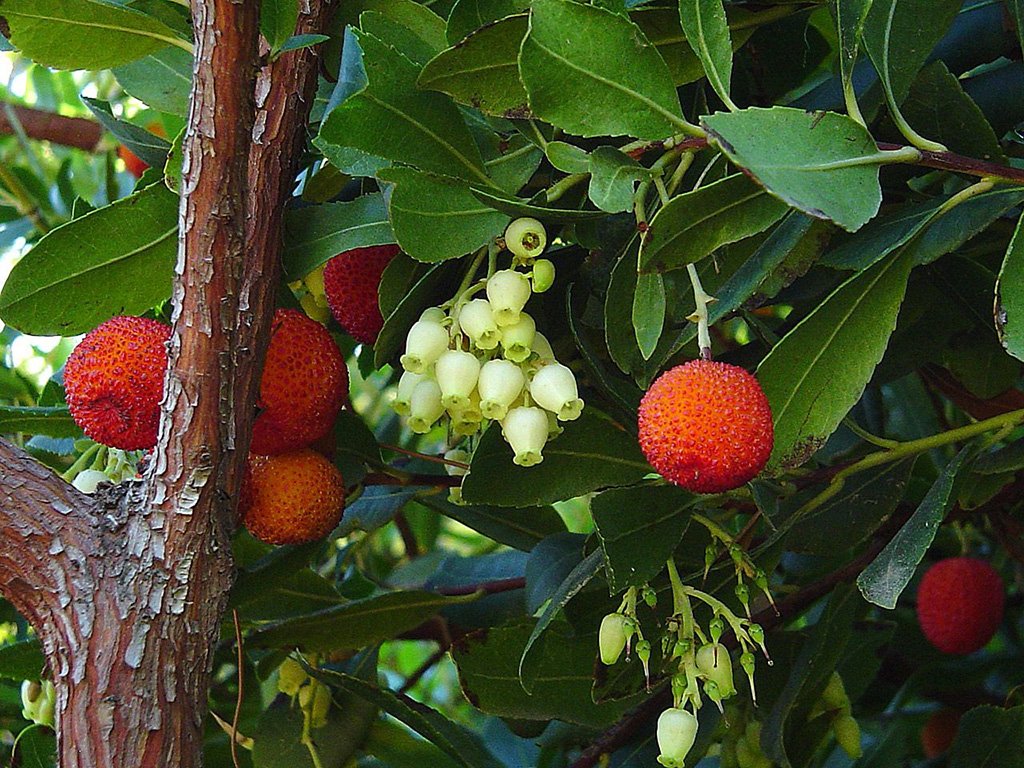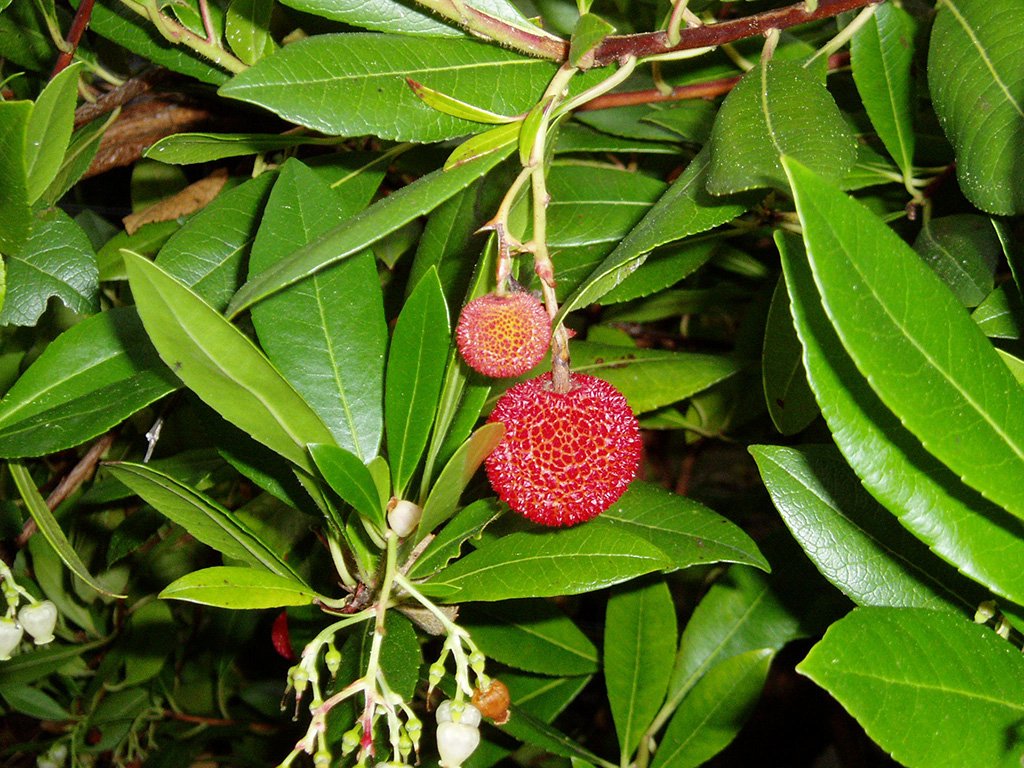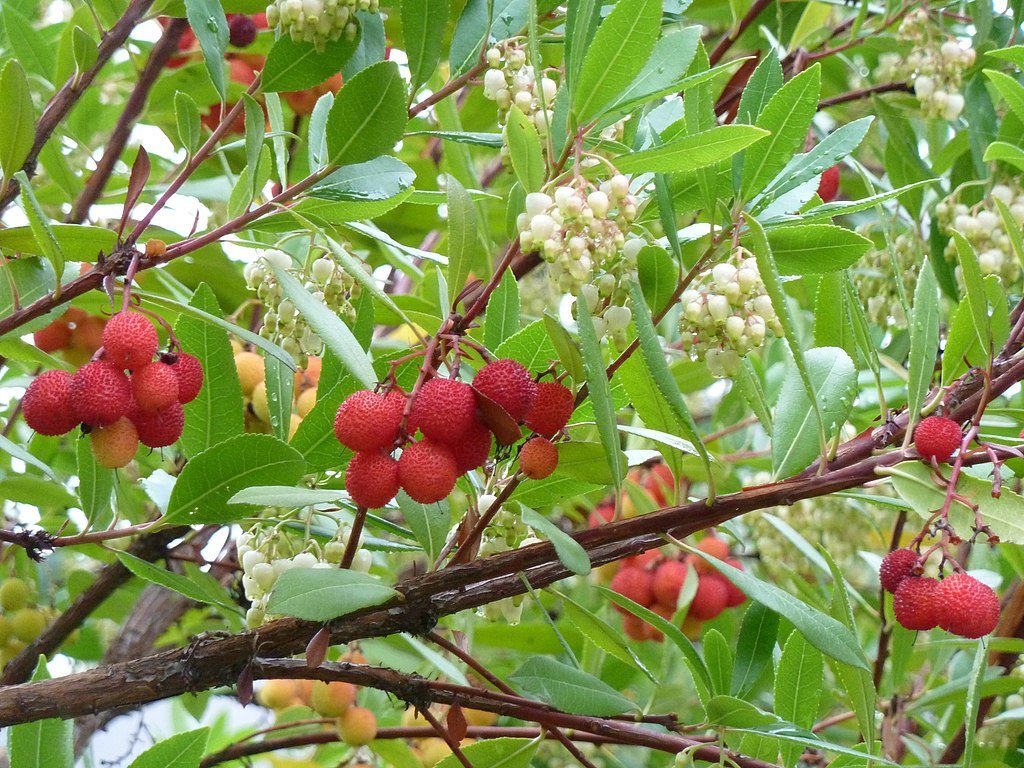If you’re traveling through Montenegro in autumn or winter and spot bright red fruits resembling strawberries growing on a tree, you’ve likely come across the strawberry tree, also known as arbutus. Locally called “jagodičnjak”, this unique plant is a common sight in southern Montenegro, particularly along the coastal regions and mountain slopes.
The strawberry tree is a remarkable part of Montenegro’s natural heritage, with its vibrant fruits and fragrant flowers making it a must-see for visitors exploring the country’s diverse flora.
What Is the Strawberry Tree?
The strawberry tree (Latin: Arbutus unedo) is an evergreen shrub or small tree belonging to the heath family (Ericaceae). It can grow up to 5-10 meters (16-33 feet) in height and is known for its unique ability to bear flowers and fruits at the same time.
🍃 Flowers — White, bell-shaped blossoms that resemble those of other heather plants.
🍓 Fruits — Bright red, round berries that ripen in autumn and winter.
Interestingly, the fruits take a whole year to mature, so it’s common to see both flowers and ripe fruits on the same tree!
Where Does Arbutus Grow in Montenegro?
The strawberry tree thrives in warm, sunny climates, making southern and coastal Montenegro its ideal habitat. You can find it in regions such as:
- Lustica Peninsula
- Budva
- Bar
- Ulcinj
- Bay of Kotor
Arbutus grows well on rocky soils and is often found on mountain slopes and in pine forests. It’s a common sight along hiking trails, where its bright red fruits stand out against the greenery.
Are the Fruits of the Strawberry Tree Edible?
Yes, the fruits of arbutus are edible! They have a sweet, slightly tangy flavor, similar to a combination of strawberries and figs.
✅ Rich in vitamin C and antioxidants
✅ Eaten fresh or used in jams and liqueurs
✅ The skin is sweet, while the flesh has a tangy taste
While the fruits can be eaten directly from the tree, locals often use them to make jams, marmalades, and traditional liqueurs.
Montenegrin Arbutus Liqueur
In Montenegro, the strawberry tree’s fruits are used to make a traditional liqueur called “jagodičnjakovac”. This fragrant and sweet drink is a popular homemade product made from centuries-old recipes.
The recipe is simple:
🍓 Fresh arbutus fruits
🍯 Honey or sugar
🍶 Rakija (local brandy)
The fruits are soaked in rakija for several weeks, and honey is added to enhance the flavor. The result is a sweet, aromatic liqueur that is perfect for warming up on cold winter evenings.
Health Benefits of Arbutus
The strawberry tree is not only valued for its taste but also for its medicinal properties. Various parts of the plant — including fruits, leaves, and bark — are used in traditional medicine:
🍃 Leaves — Contain tannins and have anti-inflammatory properties, commonly used to treat urinary tract infections.
🍓 Fruits — Rich in vitamin C, they help boost immunity.
🌿 Bark — Used as an antiseptic and a remedy for colds and coughs.
Why Should You Try the Strawberry Tree in Montenegro?
The strawberry tree is an essential part of Montenegro’s natural and cultural heritage, symbolizing abundance and harmony with nature. Here’s why you should take notice of this unique tree:
✅ Exotic appearance — Flowers and fruits grow simultaneously.
✅ Sweet and healthy fruits — A natural source of vitamins.
✅ Traditional liqueurs and jams — A tasty way to experience local flavors.
✅ Cultural significance — Locals say the tree brings luck and prosperity to those who try its fruits.
Fun Fact
The Latin name of the strawberry tree, Arbutus unedo, translates to “I eat only one”. According to legend, the ancient Romans found the fruit so unique and exotic that one bite was enough to leave a lasting impression.
Arbutus – A Symbol of Montenegro’s Natural Wealth
The strawberry tree is yet another natural treasure of Montenegro, showcasing the rich flora and culture of the region. With its bright fruits, aromatic flowers, and traditional liqueurs, the arbutus is a beloved part of Montenegrin life.
If you’re visiting Montenegro in autumn or winter, don’t miss the chance to try the fruits of the strawberry tree and experience its unique taste and aroma, infused with sunshine and mountain air!




